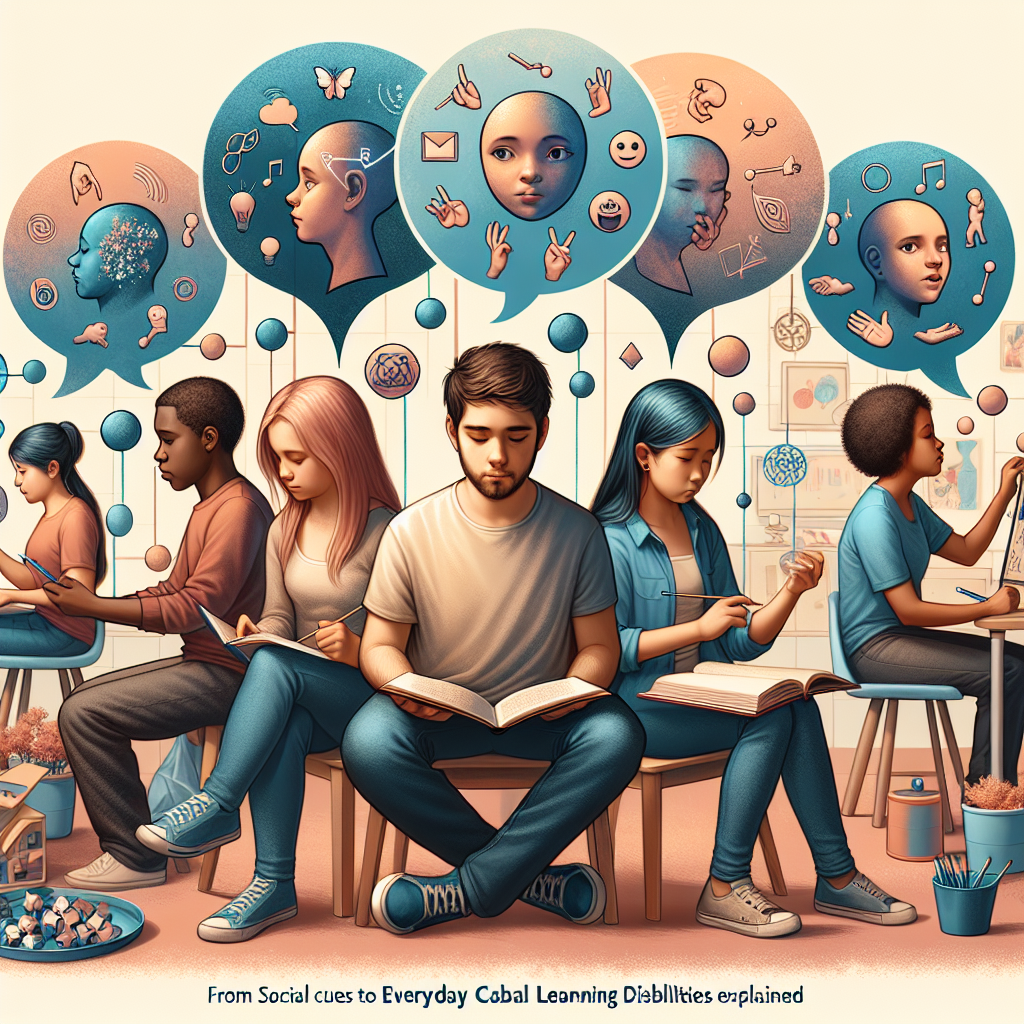From Social Cues to Everyday Tasks: Symptoms of Non-Verbal Learning Disabilities Explained
Introduction
Navigating the complexities of daily life often relies on a blend of verbal communication and non-verbal cues. But for many, these seemingly simple signals can present challenges that influence their social interactions and everyday tasks. Understanding these challenges is vital, especially when we explore the subject of non-verbal learning disabilities. In this article, "From Social Cues to Everyday Tasks: Symptoms of Non-Verbal Learning Disabilities Explained," we will dissect how these disabilities affect individuals, provide insights through real-world examples, and offer strategies to foster understanding and support for those who navigate these hurdles.
What are Non-Verbal Learning Disabilities?
Non-verbal learning disabilities (NVLD) primarily affect an individual’s ability to interpret non-verbal signals and often lead to social communication difficulties. While these disabilities can manifest in a variety of ways, they commonly make everyday tasks more challenging. Individuals with NVLD often possess strong verbal skills but struggle with non-verbal communication, body language, spatial awareness, and even motor skills.
Key Symptoms of NVLD
- Difficulty Reading Social Cues: People with NVLD may misinterpret facial expressions, tone of voice, and other non-verbal signals.
- Poor Motor Coordination: Clumsiness and difficulty with fine motor skills are prevalent in individuals with NVLD, affecting tasks like writing or participating in sports.
- Struggles with Organization: Organizing daily tasks and planning ahead can be overwhelming, leading to challenges in academic and professional settings.
- Social Anxiety: The inability to understand social interactions can lead to frustration, low self-esteem, and increased anxiety in social situations.
Case Study: Exploring NVLD in the Classroom
Consider the case of Emma, an 8th-grade student who excels in verbal communication but struggles significantly in group projects. When tasked with a collaborative assignment where she must convey her ideas, Emma finds herself lost, unable to gauge her peers’ reactions. Her teacher notices that while Emma’s written work is articulate, her inability to intuitively read the room leads to misunderstandings and feelings of isolation.
Analysis
Emma’s experiences exemplify how symptoms of non-verbal learning disabilities can lead to academic challenges. Educators need to implement strategies that foster awareness and understanding of social cues amongst peers. This could mean incorporating activities that promote social skill development within the educational framework.
Everyday Tasks and Non-Verbal Learning Disabilities
The impact of NVLD extends beyond social interactions and into everyday tasks, from managing time effectively to navigating social spaces. Here, we explore some common challenges faced by individuals with non-verbal learning disabilities in daily life.
Challenges in Everyday Tasks
- Time Management: Individuals with NVLD often struggle with estimating how long tasks will take, leading to missed deadlines.
- Spatial Understanding: Difficulty with spatial awareness can make simple tasks like parking a car or navigating a crowded room anxiety-inducing.
- Routine Tasks: Tasks that involve multi-step processes, such as cooking or grocery shopping, can become overwhelming due to poor organization.
Strategies for Support
Visual Aids and Technology
Incorporating visual aids can significantly help those with NVLD better understand social cues and everyday tasks. For instance, using charts or diagrams can help outline multi-step processes or highlight social norms. Technology, such as reminder apps and organizational tools, can assist in managing daily responsibilities effectively.
Social Skills Training
Implementing social skills training can empower individuals with NVLD. These trainings provide essential strategies to decipher social interactions and improve peer relationships. Role-playing different social situations, for example, can teach vital skills in understanding the nuances of communication that are often implicitly understood by others.
Real-Life Application: NVLD in the Workplace
Beyond education, NVLD can also affect one’s professional life. Consider James, a young adult with NVLD who excels in his job but struggles with workplace dynamics. His straightforward communication style sometimes leads to misunderstandings with colleagues, impacting collaboration.
Analysis
In James’s case, mentorship programs or workplace adaptations emphasizing empathy and communication can aid his integration into team environments. Organizational workshops focusing on social skills can extend beyond personal relationships to enhance professional interactions.
Table: Common NVLD Symptoms vs. Potential Strategies
| Symptom | Potential Strategy |
|---|---|
| Difficulty reading social cues | Social skills training |
| Poor motor coordination | Occupational therapy |
| Challenges with organization | Use of planners or digital reminders |
| Time management issues | Time management training |
Conclusion
Understanding "From Social Cues to Everyday Tasks: Symptoms of Non-Verbal Learning Disabilities Explained" highlights critical data on NVLD and its implications. These insights are essential for educators, parents, and peers to foster an inclusive environment. Encouraging awareness about these disabilities may inspire action and adaptations that ultimately contribute to better social engagement and improved daily functioning.
In the end, the real takeaway is empowerment. Individuals with non-verbal learning disabilities can succeed with understanding, appropriate support, and tools that cater to their unique experiences.
FAQs
-
What is a non-verbal learning disability?
Non-verbal learning disabilities primarily affect non-verbal communication, impacting social interactions, motor skills, and everyday task management. -
How are non-verbal learning disabilities diagnosed?
Diagnosis typically involves a comprehensive evaluation by a psychologist or specialist who assesses verbal and non-verbal skills, academic performance, and social functioning. -
Can non-verbal learning disabilities be treated?
While there is no "cure," strategies such as social skills training, occupational therapy, and educational adjustments can effectively manage symptoms. -
Are non-verbal learning disabilities associated with any other conditions?
Yes, NVLD often co-occurs with conditions like ADHD, anxiety disorders, and depression. -
How can schools support students with NVLD?
Schools can foster support through tailored learning plans, social skills groups, and training for staff on inclusivity. - What can families do to help children with NVLD?
Families can encourage open discussions about social experiences and assist with organization and planning to build confidence and independence.
By raising awareness about "From Social Cues to Everyday Tasks: Symptoms of Non-Verbal Learning Disabilities Explained," we can encourage a more empathetic world that appreciates and adapts to the diverse learning and communication styles of all individuals.

